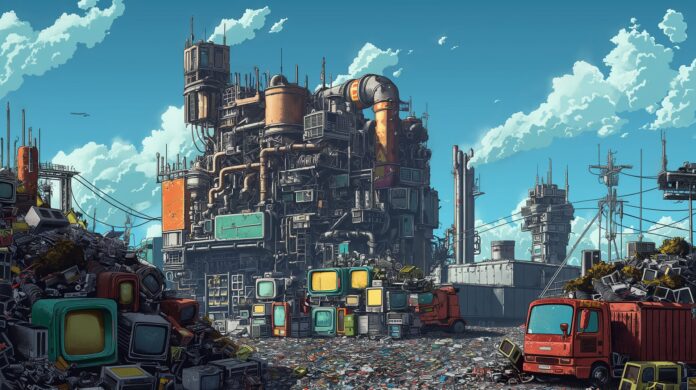Today, many companies are turning to technology to address the growing challenges of the global climate crisis. Technologies such as the Internet of Things (IoT), robotics, and artificial intelligence, which emerged with the Fourth Industrial Revolution , are making organizations’ business processes more sustainable.
For example, some businesses are increasingly relying on AI to find ways to minimize greenhouse gas emissions in transportation planning. However, AI is also a factor that significantly increases carbon dioxide production.
The model training phase of this technology creates a large amount of heat, and increasingly more water is required to cool data centers.
The circular economy model is becoming an increasingly popular topic in sustainability discussions. Aiming to use resources for as long as possible, the circular economy encourages extending the life of products and minimizing waste production.
This approach minimizes material and energy waste by implementing recycling, reuse and renewal processes at every stage from product design to post-use.
The circular economy not only increases environmental sustainability but also economic efficiency, contributing to both businesses and society building a more sustainable future.
This model creates innovative business opportunities for businesses while also creating an economy that is resilient to resource scarcity. Manufacturers focus on durable, repairable and recyclable designs to increase the lifespan of products.
At the same time, consumers also participate in this cycle with less consumption and more sharing, repair and recycling. In circular economies, which are the key to both environmental and economic sustainability, technology experts try to prevent both pollution and the extraction of non-renewable resources.
Thus, technological systems preserve and reuse resources, but do not consume them. Consumption only occurs among living beings in the form of food and some bio-based products (such as wool and wood). However, the ecosystem is then fed back through processes such as discharge and composting.

Digital technologies and the circular economy
Digital technologies are crucial for the transition to a circular economy by enabling highly resource-efficient, low-emission, low-waste production that is decentralized, automated, flexible, networked, and embedded in smart eco-industrial networks.
Long-life products with fully recyclable components reduce resource use and waste. Digital technologies radically increase transparency through monitoring and control of entire value chains, increasing resource efficiency not only in production but also in supply chains. In addition, the virtualization provided by digital technologies is expected to significantly change the use of fossil fuels and resources.
Digital technologies have become one of the fundamental building blocks of the circular economy, playing a critical role in reducing waste, using resources efficiently, and developing sustainable business models.
These technologies support data collection, analysis, and optimization processes at every stage from production to consumption, offering more environmentally friendly and efficient solutions.
In particular, IoT and big data analytics make it possible to monitor and manage the life cycle of products. In this way, recycling processes can be planned more effectively, the reuse of resources is encouraged and energy consumption is minimized.
For example, thanks to smart sensors and data analysis tools, it is possible to predict and optimize maintenance processes that will extend the life of products. In addition, digital tools such as blockchain technology increase the traceability of products and raw materials, facilitating the transition to a circular economy.
This transparency enables the adoption of more sustainable and ethical practices in supply chains. In this way, businesses reduce both costs and environmental impacts.
Advantages of the digital circular economy
The digital circular economy helps to minimize waste and achieve sustainability goals by ensuring the efficient use of resources. Digital technologies increase the traceability of products and optimize recycling processes. At the same time, they also increase transparency and efficiency in supply chains.
The digital circular economy provides businesses with new sources of revenue and competitive advantage by encouraging the development of innovative business models. Digitalization makes circular economy practices more accessible and strengthens sustainability efforts. In this way, both economic growth is supported and environmental responsibilities are met in the long term.


